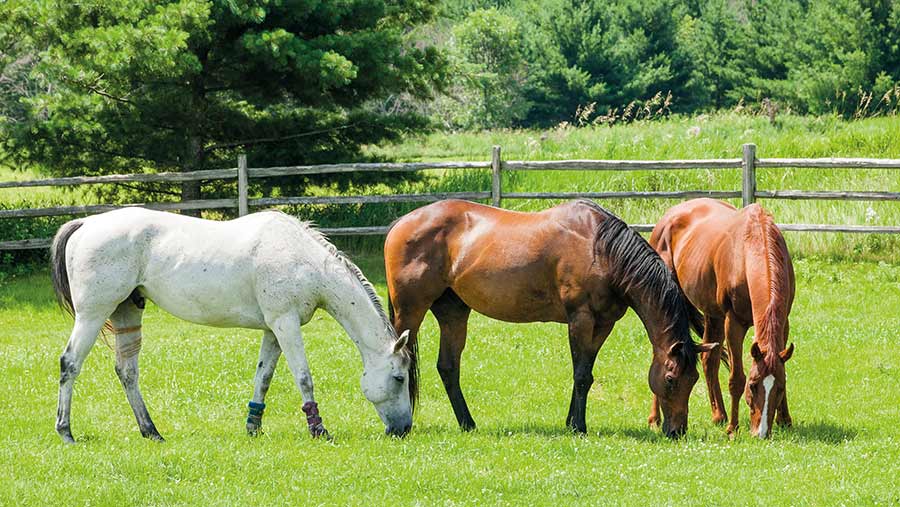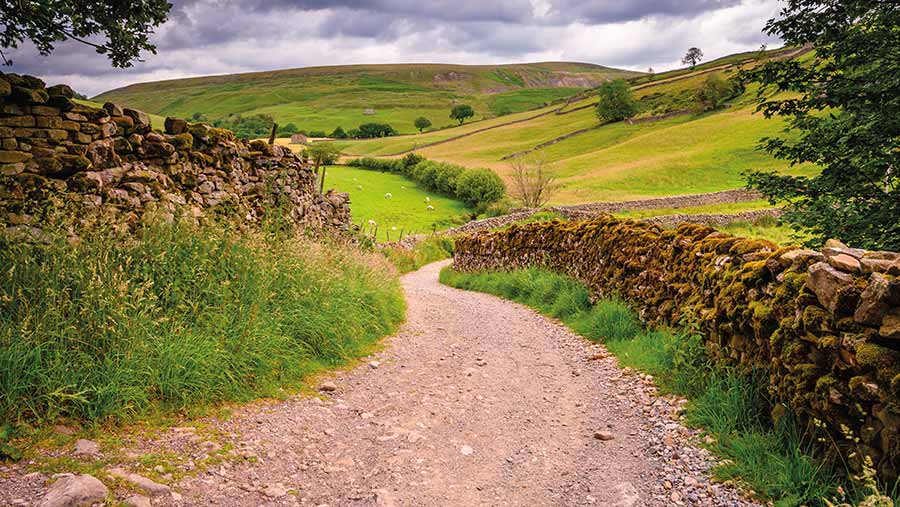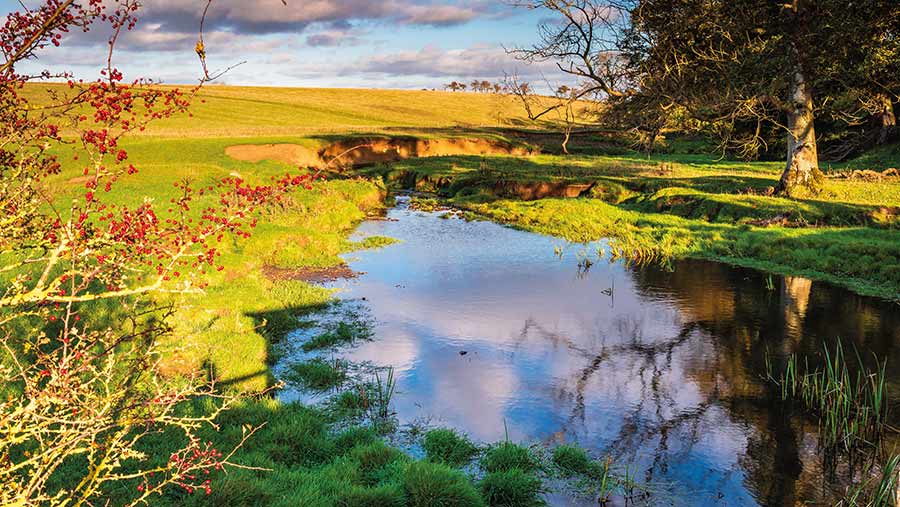Q&A: 6 most common farm access and boundaries disputes
 © Bmargaret/Adobe Stock
© Bmargaret/Adobe Stock Tracey Ashford, legal director at Thrings law firm, advises on six of the most common forms of disputes involving shared access and boundaries.
See also: Autumn GB market continues with farms, estates and forestry
I am in a disagreement with my neighbour about where the boundary to my farmland is. There are hedges around my land, with a ditch on the other side of the hedge.
My neighbour believes the hedge is my boundary, but I think it’s the ditch. Who is correct?
A: In law there is a “hedge and ditch” presumption that applies to agricultural land.
This presumption is that where two properties are divided by a hedge and a ditch, the boundary is presumed to be on the opposite edge of the ditch from the hedge.
This is based on the principle that the owner would have stood on the boundary facing his land, dug the ditch on his own land and piled the earth on his side to form a bank before planting a hedge on the bank.
Under this presumption, the far edge of the ditch would be your boundary.
The hedge and ditch presumption can be rebutted by the wording of the deed that created the boundary, or by careful consideration of the topography of the land.
This may be complex to resolve, so if there is doubt then seek legal advice from a specialist.
I rent out part of my land for the grazing of horses. Who is responsible if they cause any damage, and am I liable to fence the land or is it my tenant’s responsibility?
A: Under the Animals Act 1971, the owner of the horses may be liable for any damage caused by them.
This can include damage caused by the animals straying on to neighbouring land, for example if they damage the neighbour’s fencing or cause a road accident by escaping on to the highway.
Be aware that the owner of the animals can be liable for accident or damage even if they haven’t been negligent.
The responsibility lies with them, or the person with possession of the horses at the time.
In any legal action this will come down to a question of fact, and this will include establishing who the owner of the horses is, and who is the owner of the land where they are kept.
Therefore, it’s important to clearly set out as part of your agreement who has responsibility for the animals, and this includes whose responsibility it is to fence the land and maintain the fence.
I own a private track, which my neighbour has a right of way over. My neighbour has recently filled in some potholes on the track without consulting me. Are they allowed to do this?

© drhphoto/Adobe Stock
A: They are, up to a point. A person who has a right of way over land they do not own does have an ancillary right to repair that land, especially if they are inconvenienced by the poor condition of the way.
However, there are limits to how much they can do, and they should be careful not to carry out works that would improve (rather than maintain) the way, as it is not their land to develop.
For example, your neighbour could re-gravel the drive and fill potholes to repair them but cannot improve the way by concreting or resurfacing it.
The wording of the right of way may impose an obligation on the person who has the benefit of the right of way to contribute towards the cost of maintaining it as a condition of being able to use it.
Going forward, we would advise you and all those who have a right over the way to reach an agreement clearly setting out how the way is to be maintained, who is responsible for carrying out the work, and how the cost of the works is to be shared.
My neighbour has a right of way over a track on my property. Over the past few weeks their use of it has dramatically increased.
They are using it at all hours of the day and with a variety of large vehicles including lorries and tractors. Can I restrict their use to bring it in line with how the track was previously used?
A: It is understandable that you may feel aggrieved over this dramatic increase in use.
The starting point is to consider the wording of the right of way to see if there is any restriction on the use of the way, the type of vehicles that may use it and when the way can be used.
If there is such a restriction, you may be able to limit your neighbour’s use to what is allowed by the wording.
However, there is unlikely to be a limit on the number of times a person may use the right of way in any given period.
If you wish to address this then, in some circumstances, you may be able to take court action to restrict the use based on excessive use.
This may apply if your neighbour is using the way far beyond the right originally granted – for example if they develop their land to build a large hotel in place of a single dwelling and use your land to service the construction traffic.
However, you will need to build a convincing case to evidence that the use far exceeds that permitted by the original right of way, so seek legal advice.
I have driven over a track to gain access to my farm for more than 25 years without any issues. I don’t have any formal right of way, but no one has objected to me doing so until now.
A new neighbour who has recently moved in says that he owns the track and I have no right to use it. What can I do?
A: There is hope for you here, but you will need to put some work in to be successful. A right of way can come into existence through prior use of a route for a long period of time.
If you can show that you have driven over the track without interruption for at least 20 years, openly and without the landowner’s permission, you may be able to establish that you have acquired a right of way by prescription.
If this is the case and you cannot resolve the matter through agreement with your neighbour, you could apply to the Land Registry to register a right.
The landowner could object to the application, in which case you will have a legal battle on your hands.
The Land Registry will refer the matter to the First Tier Tribunal for a judge to decide whether you have acquired a right.
You should put together evidence of your use of the track including any historic photos you may have and obtain statements from anyone who can support your use.
It may be that if you present this evidence to your neighbour at an early stage, you could reach an agreement and avoid a lengthy and costly dispute.
There is a stream that runs along the boundary of my land. How can I find out whether I own the stream, or whether it belongs to my neighbour?

© drhphoto/Adobe Stock
A: Start by locating and checking the deed that created the boundary or boundaries between the land you own and neighbouring property or properties.
The plan or wording of this deed may provide you with the answer and tell you whether the stream is part of your parcel of land.
If it isn’t clear, then the general advice is that for a non-tidal river the boundary is presumed to be the centre of the stream.
If the land abutting the river, known as riparian land, grows slowly in size due to natural or man-made accretion (draining or drying out of the river) then the additional land belongs to the riparian owner and the position of the boundary in the centre of the watercourse is automatically adjusted.
If the stream suddenly completely changes its course, the boundary remains where it was before the diversion.
